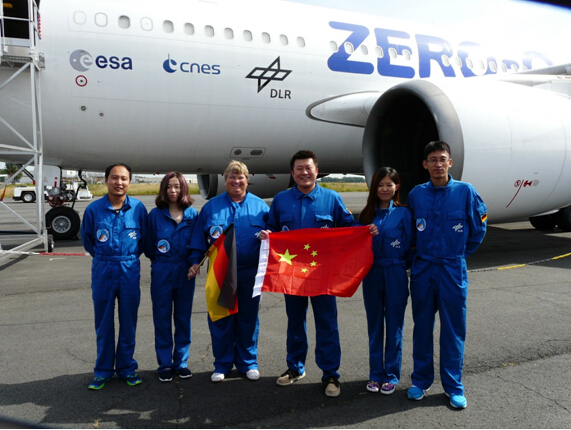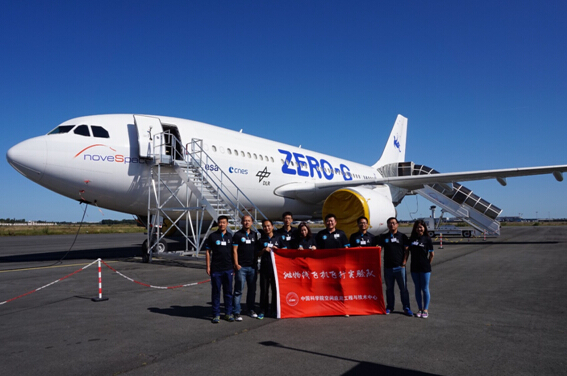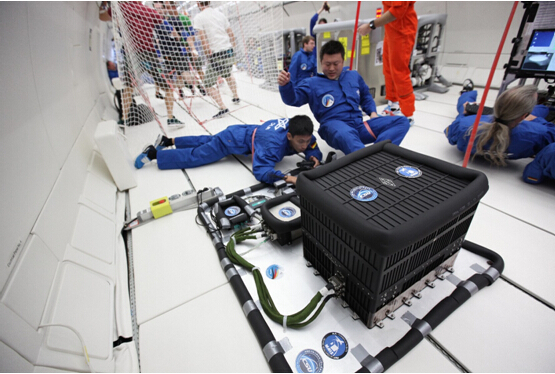

The cooperation in space utilization between China and Germany has been productive and steady in the past more than 20 years, and is going more closely and extensively.
During August 31 to September 11, 2015, the Microgravity Active vibration Isolating System (MAIS) flew on the 27th Deutsches Zentrum für Luft- und Raumfahrt (DLR) Parabolic Flight Campaign, which marked another step forward.
The MAIS is developed by the Technology and Engineering Center for Space Utilization, Chinese Academy of Sciences (CSU, CAS). MAIS will be launched with the Tianzhou-1 (TZ-1), the first cargo ship of China’s Manned Space Program, and will provide a quieter environment for physical experiments in orbit. The functions and performance of MAIS cannot be completely verified on the earth, because of the effect of gravity.
DLR granted MAIS the flight opportunity, and Novespace company provided technical support. A complete success was attained with 124 parabolas in four flights, the performance of MAIS was verified, and all key data were obtained. This experiment will guarantee the success of space mission of MAIS.
Parabolic aircraft is one of the main platforms to achieve zero gravity, with a short preparation period, repeating microgravity phases, and the ability for man-tending on board. They have been widely used in astronauts training, scientific experiments and space device testing.




